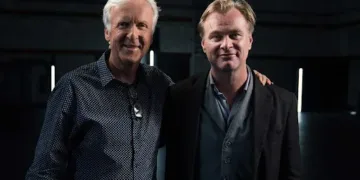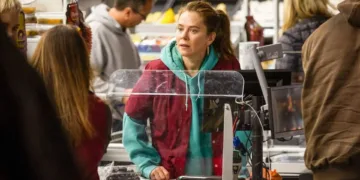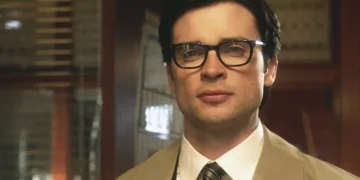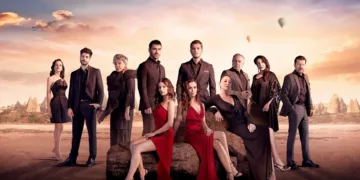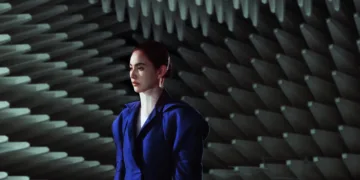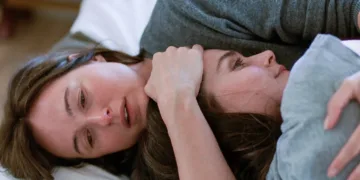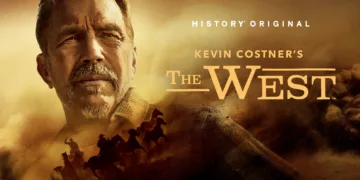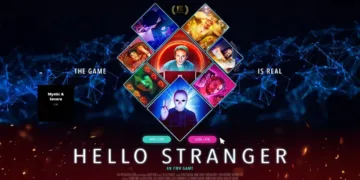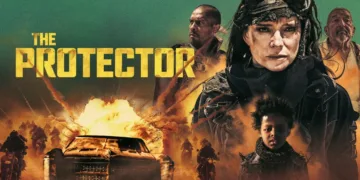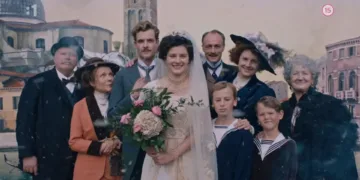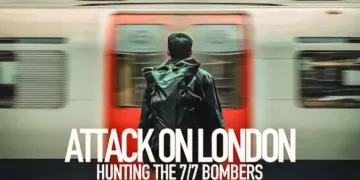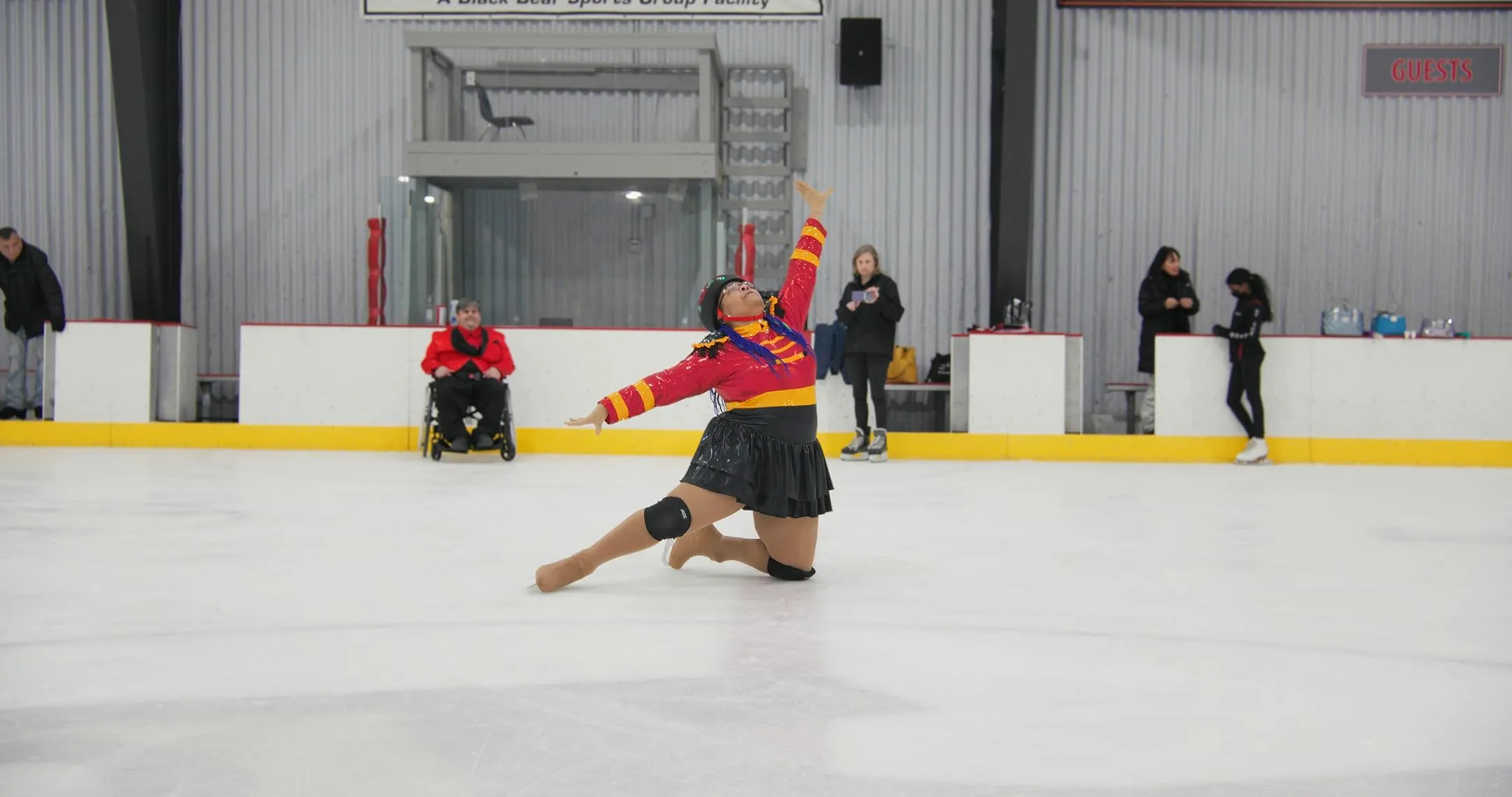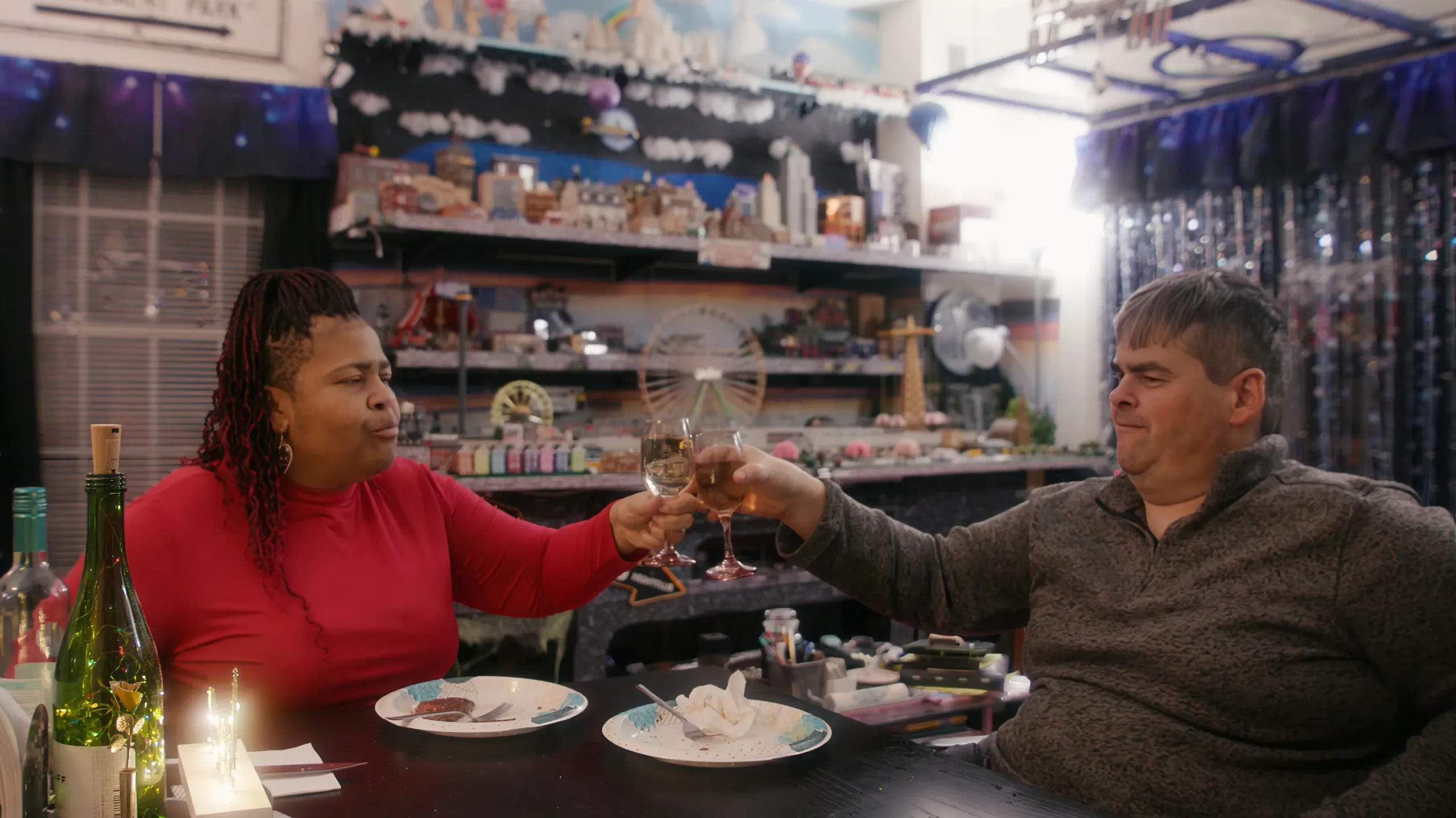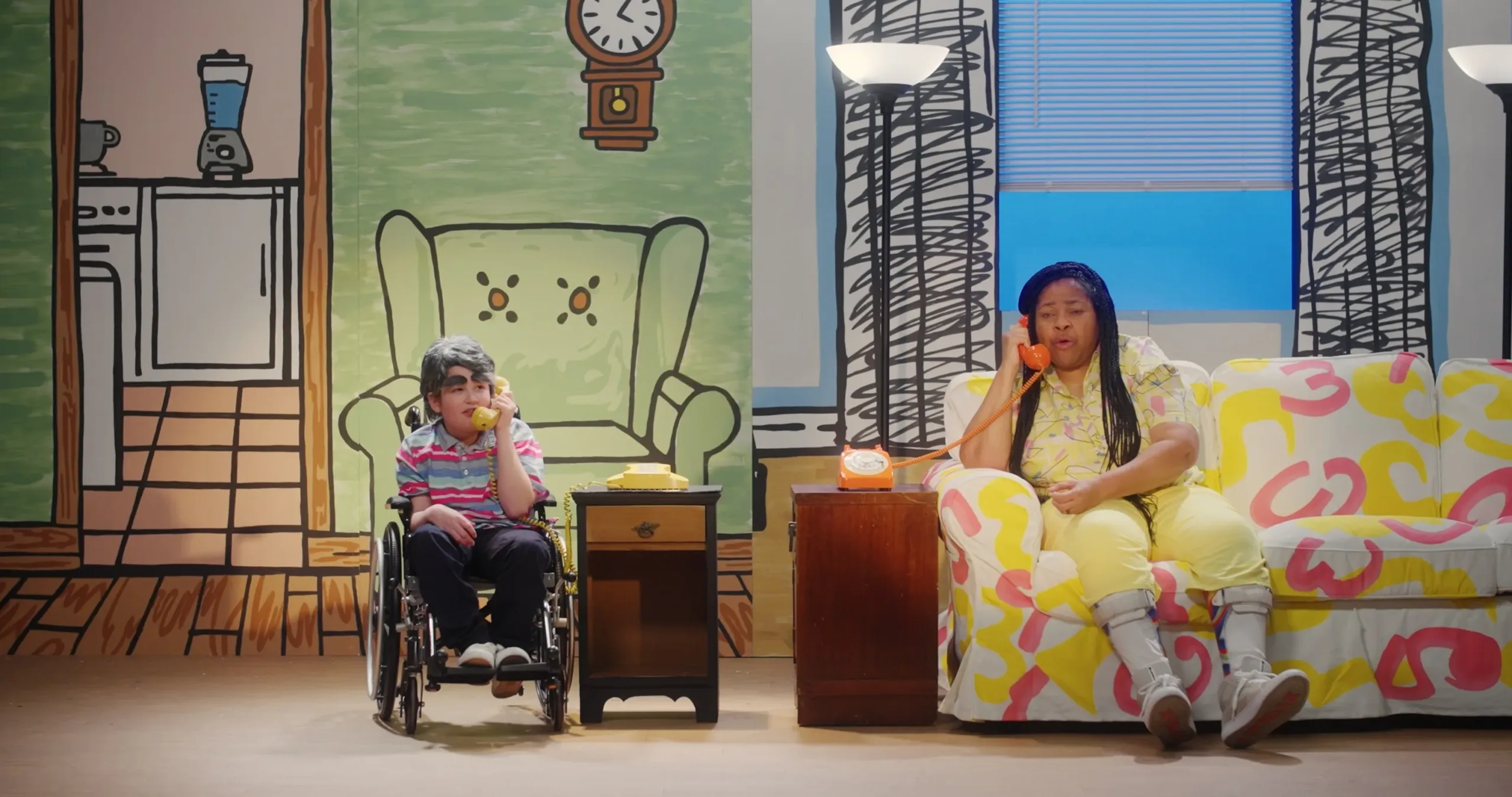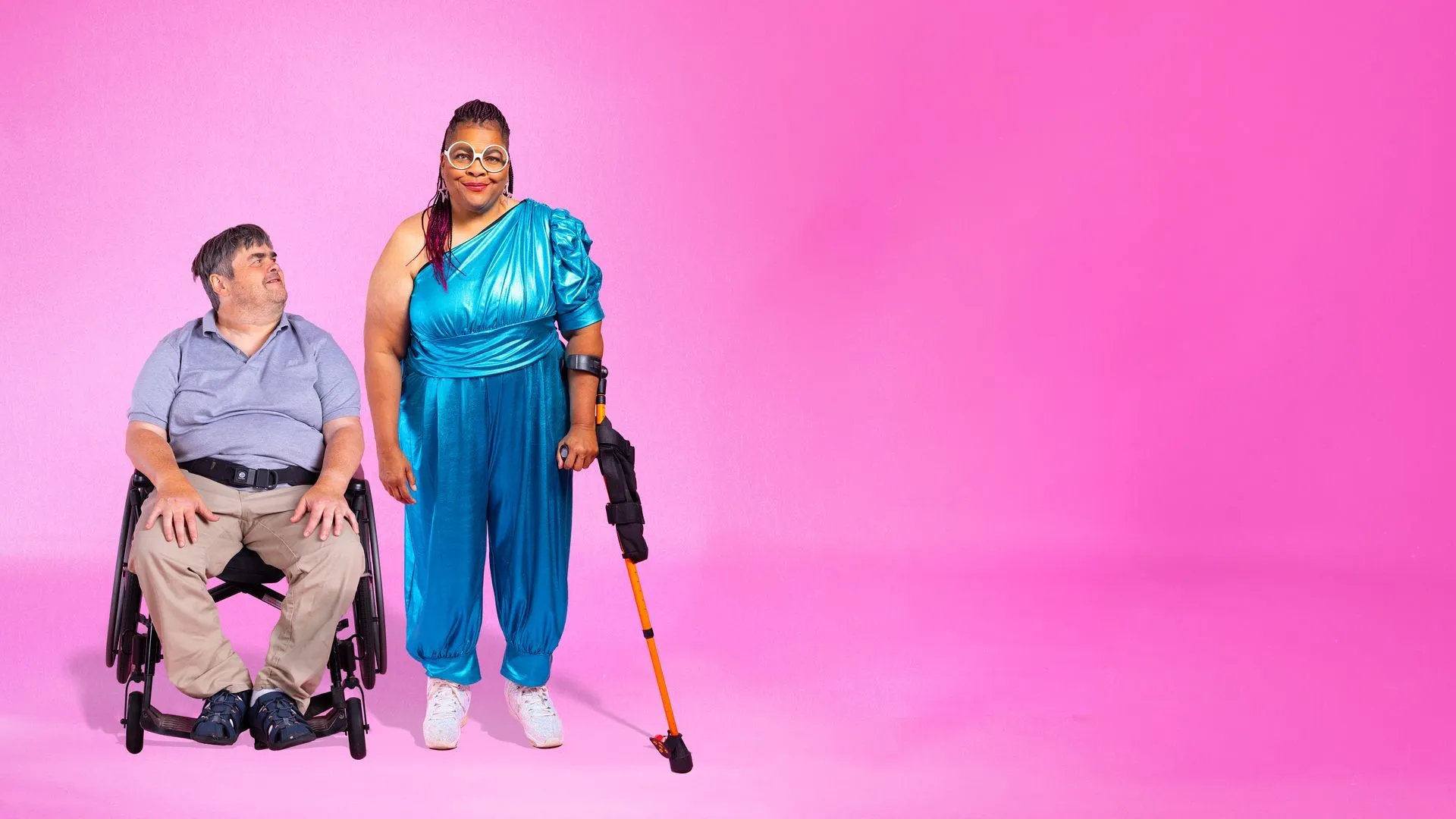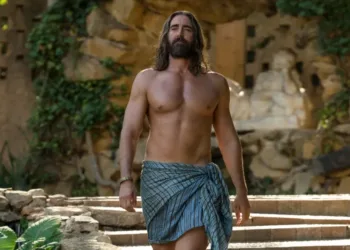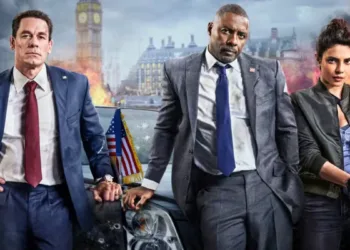In “Patrice: The Movie,” we meet Patrice Jetter, a lively school crossing guard and impassioned disability rights champion. Patrice exudes a spirit of resilience and joy; her upbeat, caring demeanor shows through as she easily navigates life’s complexities.
Her position as a crossing guard is more than just a job; it reflects her commitment to community and connection, reflecting a greater societal need for inclusivity and support for individuals with disabilities.
Her boyfriend, Garry Wickham, is engaging, bringing his perspective to their joint journey. Garry’s experiences as a wheelchair user with cerebral palsy influence their relationship dynamics, particularly their fantasies of marriage, which are hampered by the harsh realities of the “Marriage Penalty.”
This system pushes them to confront not just personal challenges but also bigger societal injustices, making their love story both moving and political. They work together to create a narrative that deeply resonates, highlighting the nexus of love, advocacy, and the fight for basic human rights.
The Burden of Systemic Challenges
“Patrice: The Movie” delves deeply into the subject of the “Marriage Penalty,” a word that describes the terrible reality that individuals with disabilities encounter when they dare to dream of a shared life. In this setting, marriage is more than just a celebration of love; it is also a risky financial decision.
Patrice and Garry’s desire to marry is challenged by the sobering reality that doing so may risk their much-needed disability benefits. This approach presents a terrifying quandary, requiring couples to choose between emotional well-being and economic survival—a concept that power resonates completely in today’s societal milieu, where love frequently collides with financial pragmatism.
The film effectively depicts the financial consequences of these government actions, emphasizing how systemic impediments perpetuate a cycle of poverty and isolation. Patrice’s struggle to keep her benefits while yearning for a life with Garry serves as a moving critique of a system that appears to be meant to keep individuals dependent and lonely. This narrative resonates at a time when many people struggle with the complexities of modern relationships against economic instability.
Beyond the marriage difficulty, “Patrice: The Movie” depicts the daily struggles that come with such systemic challenges. The couple’s challenges in obtaining transportation and other basic requirements highlight the emotional toll of living in chronic financial hardship.
The film depicts poignantly how bureaucratic impediments not only impede their daily lives but also undermine their sense of independence and dignity. This depiction is evocative of the raw emotional storytelling found in the works of filmmakers such as Noah Baumbach, who frequently investigate the complex dynamics of human relationships in the face of societal constraints.
The cinematography complements this narrative with intimate close-ups and genuine moments that draw viewers into Patrice and Garry’s world. The editing rhythm reflects the ups and downs of their journey, creating an engrossing experience that allows the audience to feel the weight of their struggles. In this approach, “Patrice: The Movie” serves as a cultural artifact that challenges us to reflect on the systemic inequalities that persist in our society today. It is also an engaging documentary.
Emotional Storytelling through Theater
“Patrice: The Movie” features a stunningly new narrative approach in theatrical interludes, both as a storytelling tool and a moving reflection on Patrice’s life. These parts, which include Patrice herself alongside kid actors, create a charming yet emotionally moving depiction of her past.
In an ingenious move, the youngsters portray various roles from her life, allowing Patrice to relive her experiences with a distinct blend of comedy and sincerity. This artistic choice contrasts the more difficult aspects of her adult experiences with the innocence of infancy, eliciting a sense of nostalgia that resonates throughout the film.
The impact of these theatrical scenes is enormous. They add crucial background and emotional depth to what could have been a simple documentary, transforming it into a multifaceted investigation of identity and resilience. Using humor and imagination, the film effectively handles important themes like trauma and systemic injustice without falling into despair. This technique is reminiscent of the humorous yet melancholy manner of filmmakers such as Jacques Demy, whose work frequently combines lightheartedness with deeper societal concerns.
Furthermore, the theatrical format enables a reworking of conventional documentary storytelling, encouraging audiences to engage with Patrice’s narrative on several levels. It challenges the distinction between reality and performance, implying that our roles shape our life stories in many ways. This inventive genre blending symbolizes a generational transition in our perception of documentary filmmaking and emphasizes the power of creative expression in facing and understanding personal and societal struggles.
Patrice’s Personal Journey and Advocacy
“Patrice: The Movie” provides an intimate look into the life of Patrice Jetter, whose journey is marked by childhood trauma and incredible resilience. The film does not shy away from depicting the brutal realities of her childhood, such as bullying and familial violence.
This origin is crucial because it creates the groundwork for understanding Patrice’s character and the intense advocacy that would eventually define her life. Through a series of open comments, the film shows how these formative experiences instilled in her tremendous empathy for those going through similar struggles. It’s a narrative reminiscent of the resilience in many classic French New Wave films, in which protagonists emerge from hardship with a fresh sense of purpose.
Patrice’s move from personal hardship to activism becomes a prominent subject as she navigates the complexities of adult life. The film beautifully depicts her progress, demonstrating how her personal experiences inspire her passion for handicap rights. Patrice’s advocacy is more than just a reaction to her past; it is a purposeful engagement with the systemic hurdles that affect many individuals.
Patrice represents the spirit of grassroots activism, organizing community events and raising awareness of the challenges created by the “Marriage Penalty.” Her projects emphasize the importance of community solidarity and the need for collective action, themes strongly ingrained in today’s culture, where many people attempt to fight long-standing imbalances.
The cinematography and editing accentuate this narrative arc by using close-ups to portray the emotional weight of Patrice’s journey while opposing it with lively sequences from her advocacy activities. The use of music—perhaps a tribute to her love of jazz—highlights times of triumph and vulnerability, creating an audio experience that complements her narrative.
In doing so, “Patrice: The Movie” documents a personal journey and portrays Patrice as a cultural artifact of resilience, reflecting greater societal shifts toward inclusivity and justice. This film serves as a reminder that personal narratives may be powerful change agents, inspiring others to join the fight for equity and rights.
Community Support and Activism
In “Patrice: The Movie,” the subject of community support emerges as a crucial undercurrent, demonstrating how social networks may help individuals battling systemic challenges. Patrice and Garry’s lives are inextricably linked to the fabric of their community, which serves as both a support system and a stimulus for their activism.
The film eloquently emphasizes the importance of these relationships, capturing moments of solidarity that will strike a chord with anybody who understands the power of collective action. From local gatherings to pooled resources, the depiction of community involvement underlines that advocacy is frequently a collaborative activity, reflecting broader cultural trends toward cooperation and mutual aid.
Patrice and Garry’s activism is more than just a backdrop in the film; it is a crucial narrative thread demonstrating their commitment to disability rights. They are both inspiring and necessary in their attempts to raise awareness about the challenges encountered by individuals with disabilities. The film depicts their participation in rallies and talks, emphasizing the grassroots character of their advocacy. This depiction resonates with recent societal developments, in which underrepresented voices increasingly demand recognition and change.
The cinematography accentuates this narrative by using dynamic framing and powerful editing to reflect the passion and urgency of their activism. Sound design, which includes community voices and ambient noise from events, immerses the viewer in the experience and reinforces the notion that activism is a dynamic, living activity.
This confluence with the spirit of independent filmmaking, typically defined by a personal viewpoint on social concerns, makes “Patrice: The Movie” a powerful example of how film can serve as a platform for change, encouraging audiences to engage with their communities and campaign for justice.
Cinematic Techniques and Directorial Approach
In “Patrice: The Movie,” Ted Passon’s directing style is marked by a strong observational approach that allows the narrative to flow naturally. This strategy immerses viewers in Patrice and Garry’s daily lives, creating an authentic connection to their struggles and successes.
Passion expertly combines the factual approach with creative storytelling elements, frequently blurring the distinction between reality and performance. This dynamic adds to the film’s emotional depth, enabling viewers to engage with the facts of their position and the lived experiences that have led up to them.
Visually, the film uses several tactics to enhance its storytelling. Animation and quirky images add a lighthearted element to the more serious themes, evoking the imaginative spirit of directors such as Michel Gondry. The cinematography captures both private moments and larger community events with colorful vitality, effectively transporting viewers into the world of Patrice and Garry.
Sound design also requires a well-chosen soundtrack that complements the narrative arc. The music stimulates a wide spectrum of emotions, from joy to melancholy, increasing the audience’s engagement. These aspects work together to create a complex tapestry that lifts “Patrice: The Movie” above the level of a traditional documentary, establishing it as a major cultural relic that resonates with modern struggles for justice and inclusivity.
Conclusion and Final Thoughts
“Patrice: The Movie” is a moving exploration of advocacy and resilience, combining important messages about love, community, and the systemic challenges that individuals with disabilities confront.
The film’s central theme is the importance of personal and societal connection, as it depicts how Patrice and Garry manage their love in the face of the harsh reality of the “Marriage Penalty” and societal indifference. Their journey is a striking reminder that systemic challenges are far more than abstract concepts; they have far-reaching consequences for real people and their relationships.
The film’s commitment to raising awareness about these challenges is admirable, as it not only highlights the struggles of persons with disabilities but also advocates for a more comprehensive societal engagement. “Patrice: The Movie” encourages spectators to reflect on their roles in promoting inclusivity and understanding by combining personal narratives with activism. This is especially important in today’s cultural landscape, where discussions about equity and rights are more crucial than ever.
The film powerfully resonates with viewers’ emotions, leaving them not just moved but encouraged to take action. It serves as both a celebration of love and a call to action for justice, encouraging viewers to engage with the systemic hurdles that persist in our society. As a result, it transcends the typical documentary form, developing as an important cultural artifact that inspires hope and action.
The Review
Patrice: The Movie
"Patrice: The Movie" is a moving and unique documentary that expertly combines personal narrative with advocacy, highlighting the systemic challenges that individuals with disabilities confront. Ted Passon's observational manner and creative storytelling immerse audiences in a rich tapestry of resilience, community, and love. The film's emotional depth and call to action are powerful, making it more than just a viewing experience but a cultural catalyst for change. It is a must-see for anybody interested in social justice and the power of storytelling.
PROS
- Engaging portrayal of personal struggles and resilience.
- Blends documentary and creative elements effectively.
- Raises awareness about disability rights and systemic issues.
- Highlights the importance of social networks and support systems.
- Visually captivating with dynamic editing and sound design.
CONS
- Pacing Issues: Some segments may feel slow or drawn out.
- Might be challenging for viewers unfamiliar with disability advocacy.
- Primarily resonates with audiences interested in social issues.














